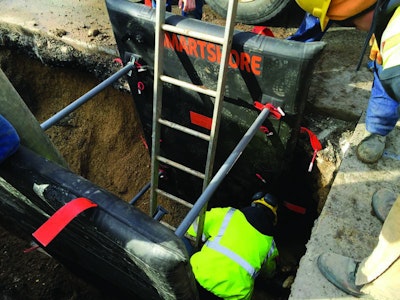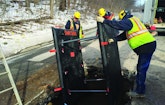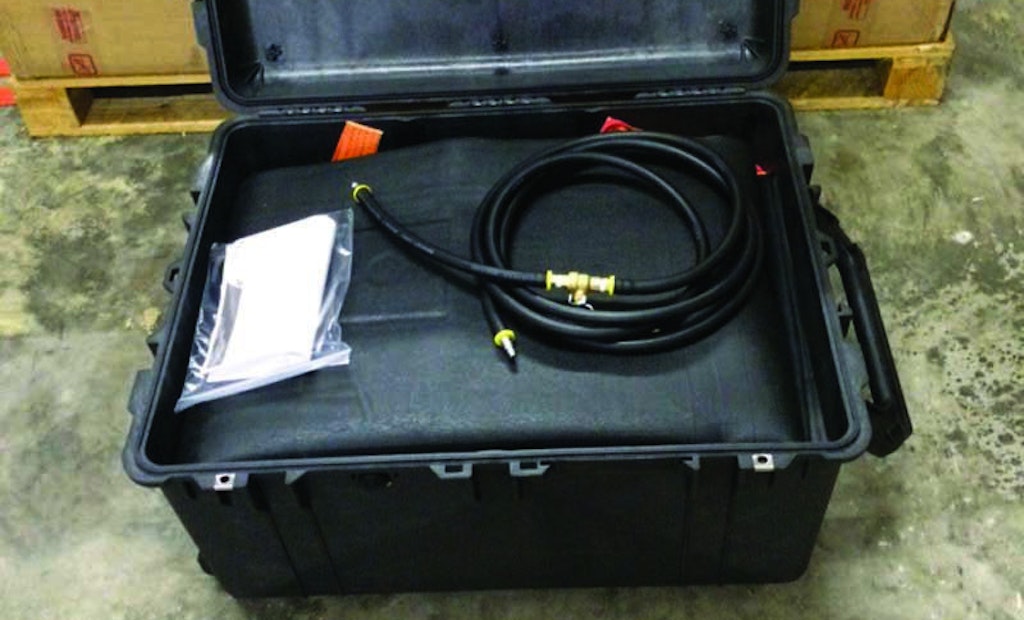Interested in Safety?
Get Safety articles, news and videos right in your inbox! Sign up now.
Safety + Get AlertsShoring systems can be heavy, awkward and inconvenient. If you choose not to use it, there’s a good chance you or one of your co-workers will end up dead at some point. Luckily, there is a better alternative.
Used in Europe for more than six years, an inflatable trench shoring system from Pronal-USA has caught on in the United States over the last three years.
“It’s very compact; you can roll it up and carry it under your arm,” says Pronal-USA Sales Manager Tony Simunac. Each section weighs in at only 29 pounds. “You can throw it in the back of your pickup truck or the trunk of your car as opposed to having plywood boards or aluminum boxes.”
Stemmle Plumbing Repair has been using the Smartshore system for a couple years now. It has purchased nine of the portable shoring devices for its plumbing, electrical, utility and septic system installation company serving the Richmond, Virginia, area.
Bill Schooley, operations manager at Stemmle, started with three Smartshore sets and recently bought six more. He now has three of the small size, for trenches up to 6.5 feet deep, and six of the larger model for 8-foot trenches. Each set includes two inflatable panels that are 4.5 feet wide and can be used together to protect trenches up to 20 feet in length.
According to Pronal-USA, the double-wall, rubber-coated NPVC fabric is resistant to punctures and provides up to 300 pounds per square foot of soil pressure resistance with inflation of just 10 psi and the struts in place. Smartshore is certified to comply with OSHA standard 29 CFR, part 1926, subpart P for soil types A, B or C-60.
Simunac says typical customers include municipal public works departments, sanitary and water districts, contractors, private water companies, and gas, sewer and water utilities. The kit includes four or six adjustable struts available in four sizes (24 to 36 inches, 32 to 43 inches, 43 to 55 inches and 36 to 60 inches) and a 13-foot inflation hose with shut-off valve. A venturi vacuum pump is available to speed up deflation of the panels.
“I was looking at buying some trench boxes,” explains Schooley. Then he saw Smartshore at the Water & Wastewater Equipment, Treatment & Transport (WWETT) Show. “Every year there’s that one thing that makes the trip worthwhile, and that year it was Smartshore.”
Now the company uses them often, since most of Stemmle’s work involves excavations deeper than 4 feet.
“We have four excavators and a hydroexcavator and were doing more and more work where we were using the hydraulic shoring and steel-framed shoring, which is a pain. Excavators don’t always have the weight capability to lower them into the holes. Smartshore weighs so little that it’s easy for one person to move them around. They set up in minutes and are easy to adjust with a couple of turns of the wrench.”
Now that Schooley has enough to go around, every excavator travels with Smartshore, two sets for each of the large excavators and a single set for the small one. The inflatable panels and equipment are stored in plastic boxes Schooley picked up at a big-box store with the struts packed on top of the box. They are carried in the pickups that haul the excavators.
The first time Stemmle workers used Smartshore was at a power plant project. “The guys fell in love with it because it is so light, easy to get into the holes, and strong,” Schooley says.
On a recent sewer connection job, Schooley says the 20-foot-long trench kept undermining until the Smartshore was installed. “We were able to work in there and a couple of times the base fell in and didn’t even move the shoring because it was locked in place. I got Smartshore because it is so easy to handle and work with that the guys would be more apt to use them, and they have been.”
About 20 workers die annually in trenching accidents, all of which can be prevented with proper equipment and work practices.








